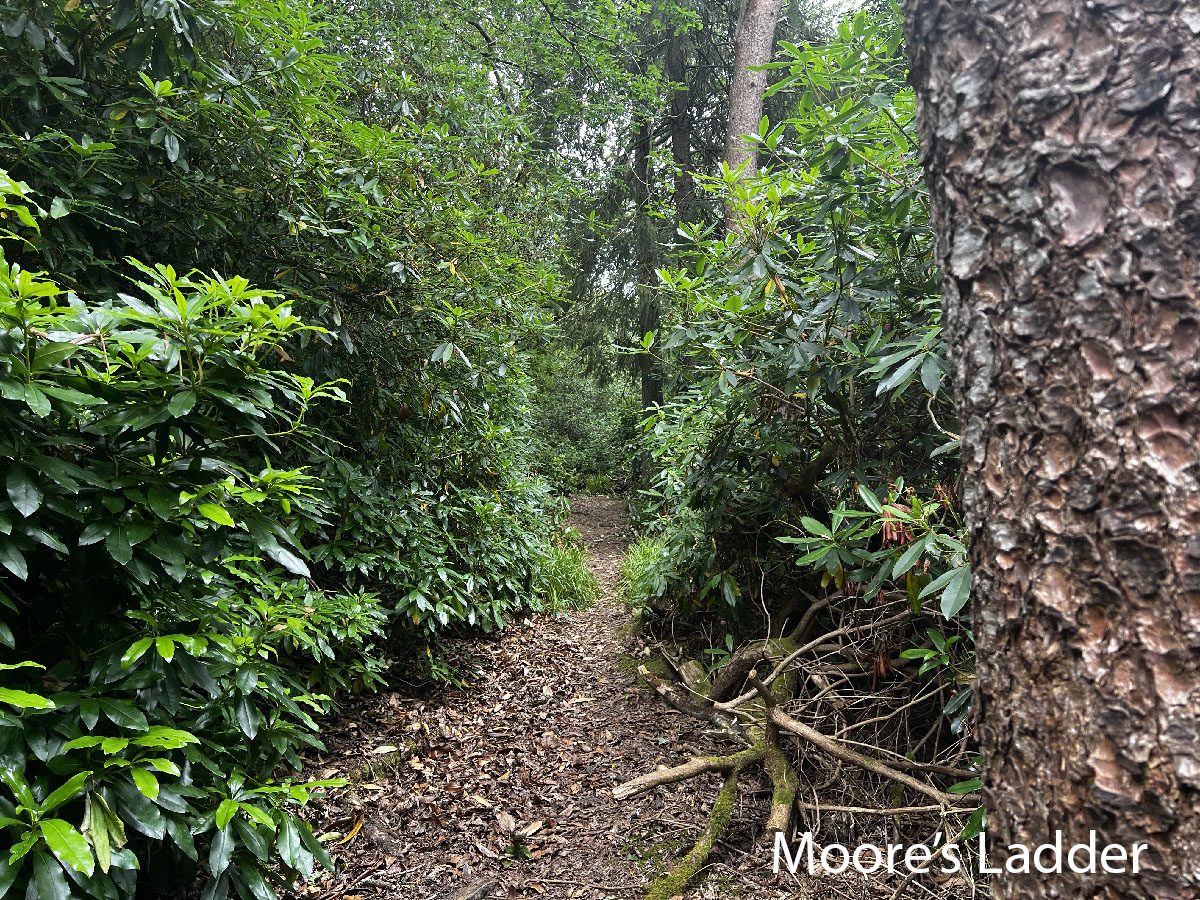
Many readers of this article will never have heard of Moore’s Ladder. It is a meandering, steep climb located in Bansha Woods, at the eastern end of the Sliabhnamuck ridge, on the southern edge of the Glen of Aherlow. This article is about what happened recently to Moore’s Ladder.
The ascent of Moore’s Ladder begins in Bansha Woods at a gate that is on the boundary of the lands around Moore’s Castle. The top of the climb isn’t far from a rocky outcrop with beautiful views. The outcrop is called Moore’s Table. It seems that the Moores of Mooresfort, who owned Moore’s Castle used to visit Moore’s Table via Moore’s Ladder.
For many, many decades now, Moore’s Ladder has continued to be popular with walkers and (brave) runners. Even though it isn’t very well known, a sufficient number of walkers use it so that it remains open and hasn't become captive to the ever-encroaching rhododendron.
So, what has happened to Moore’s Ladder? Coilte happened to it. Or at least, logging happened to it. As a walk, it used to take on the semblance of a cave, more than just woods. Most of the trees were quite old and large. The following photo shows a portion of the walk that hasn’t been logged (yet).
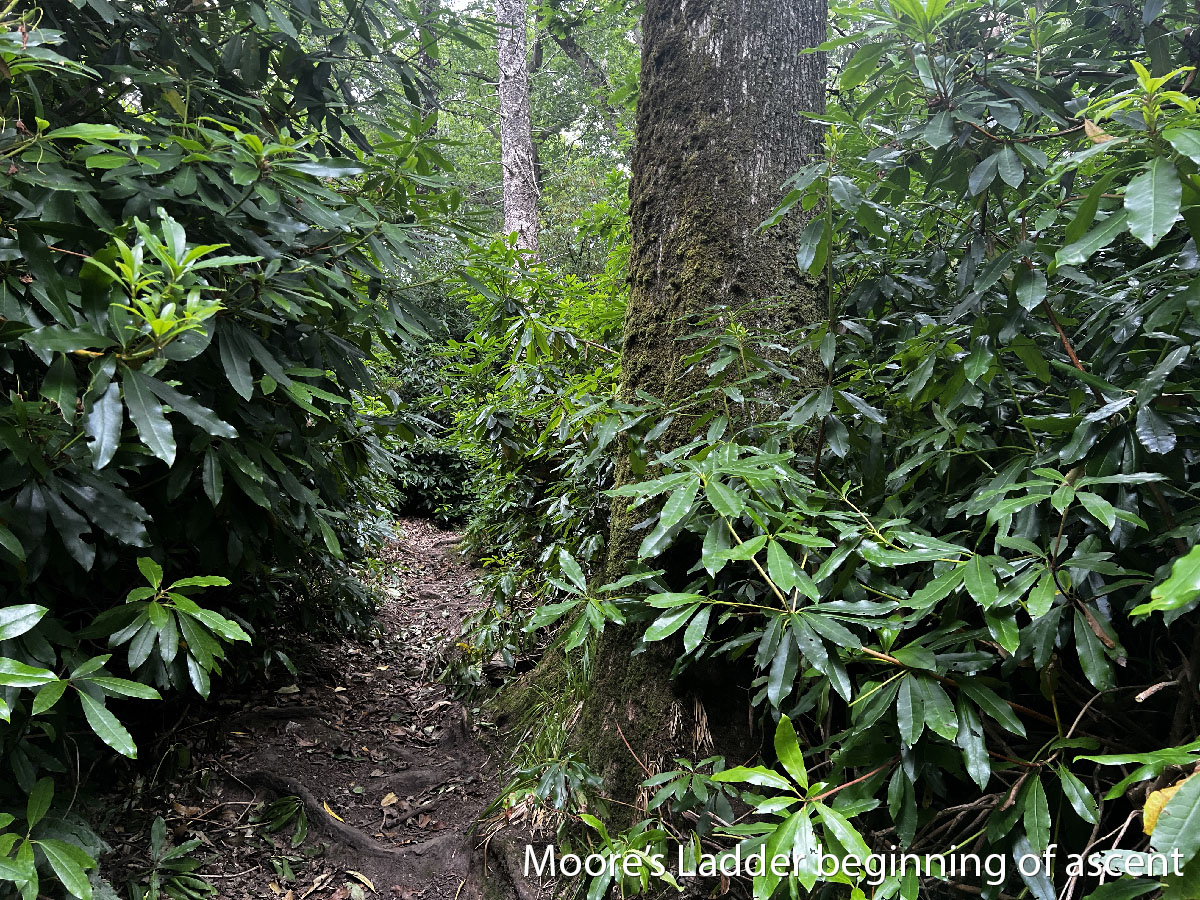
The familiar verdant undergrowth and thick canopy continue for about fifty metres, when the first glimpse of the logged, open ground appears. For those who hiked along Moore’s Ladder frequently, it is a jarring sight as soft all-encompassing woodland gives way to a bleak, open landscape.
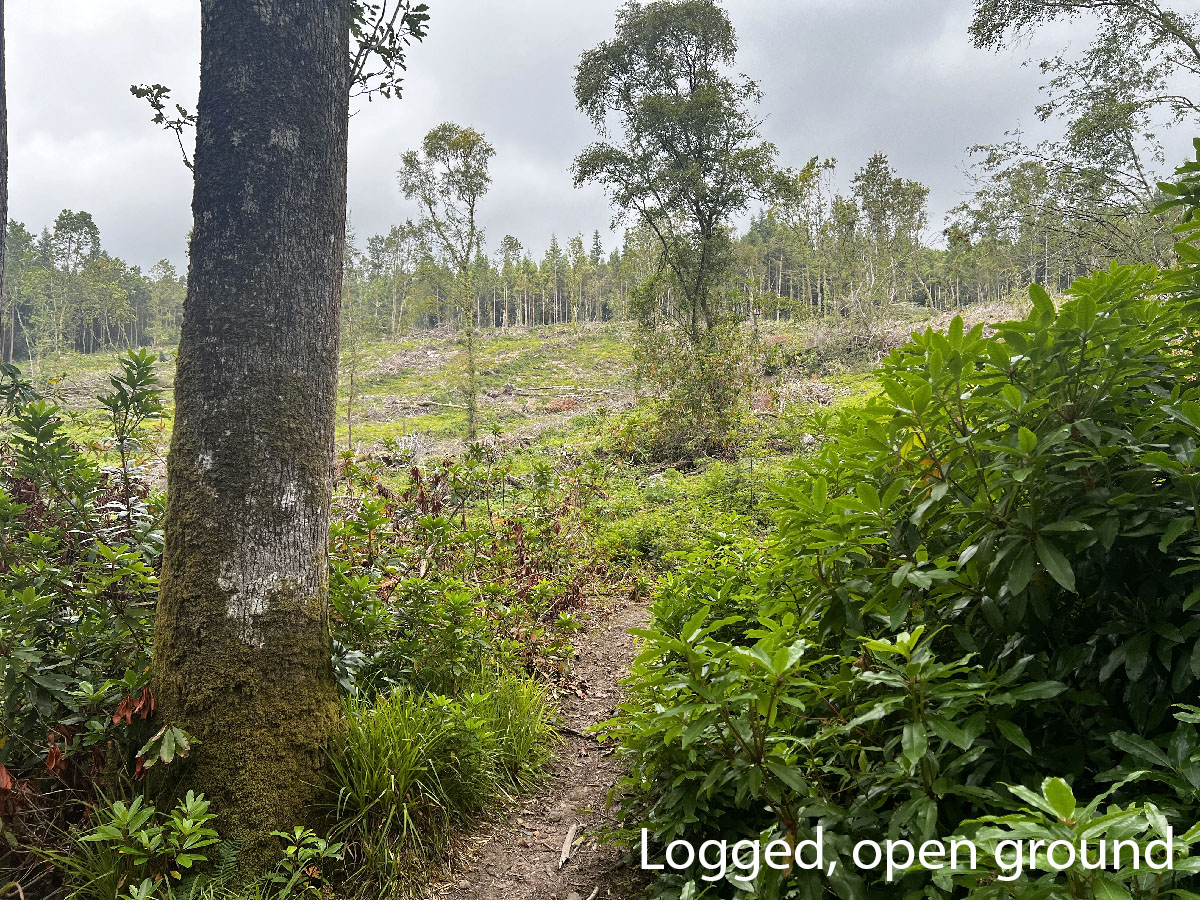
The Ladder track is still there, but the feeling is gone. As the old Ladder twisted and turned up along the side of Slievnamuck, you couldn’t see where you were going to be in two minutes time. It felt like a labyrinth, cloaked in greenery.
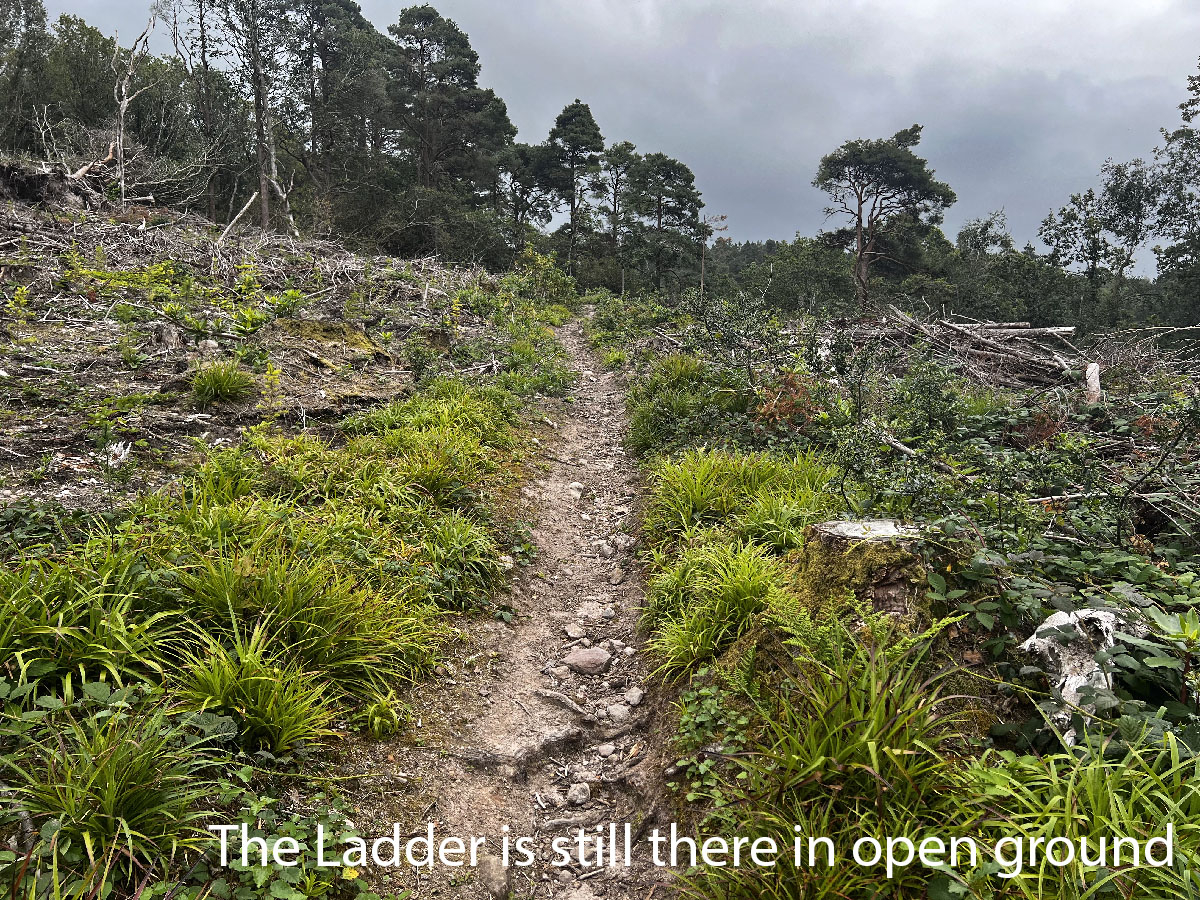
The next generation of trees has been planted already, fast-growing sitka spruce trees, mainly useless ecologically but commercially attractive.
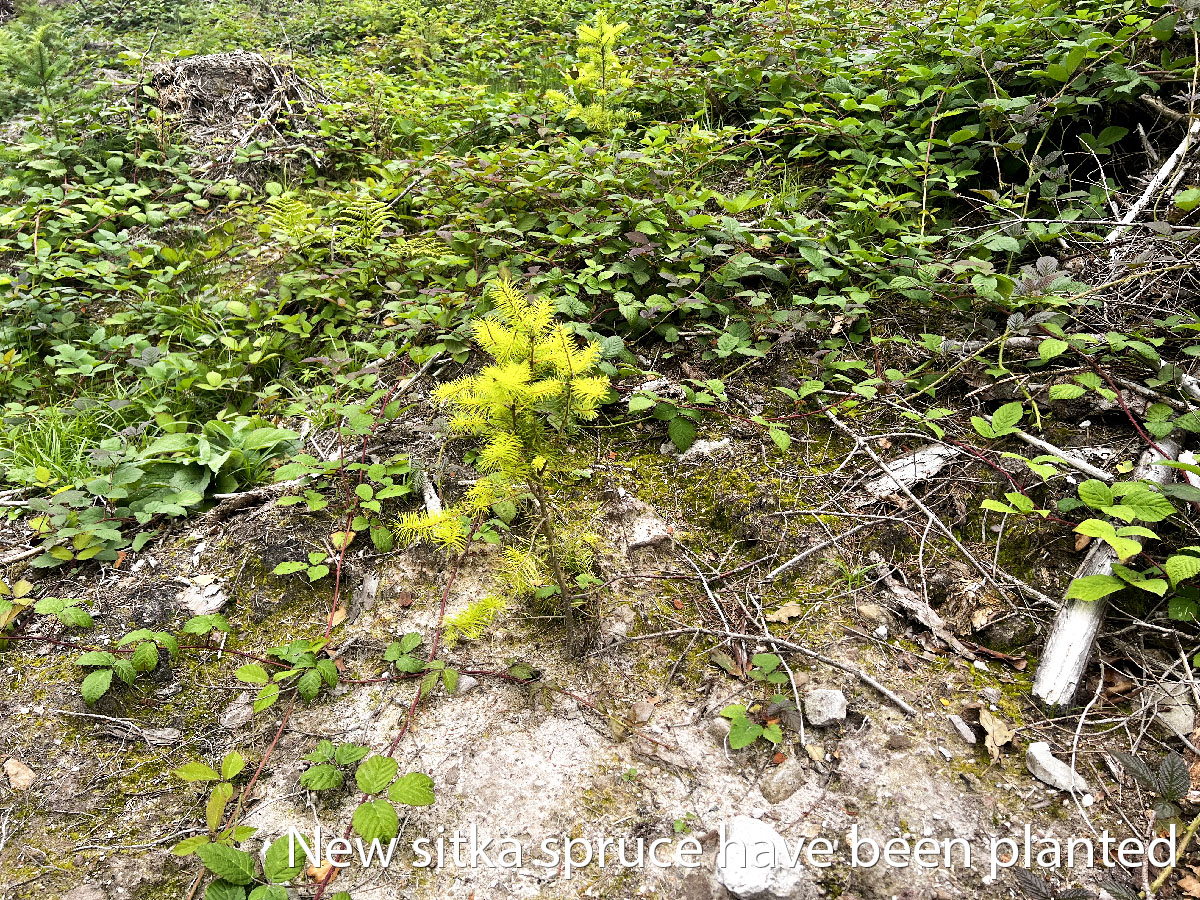
They are replacing tall trees that were up to fifty years old. The rings in this log show it to be almost 50 years old,
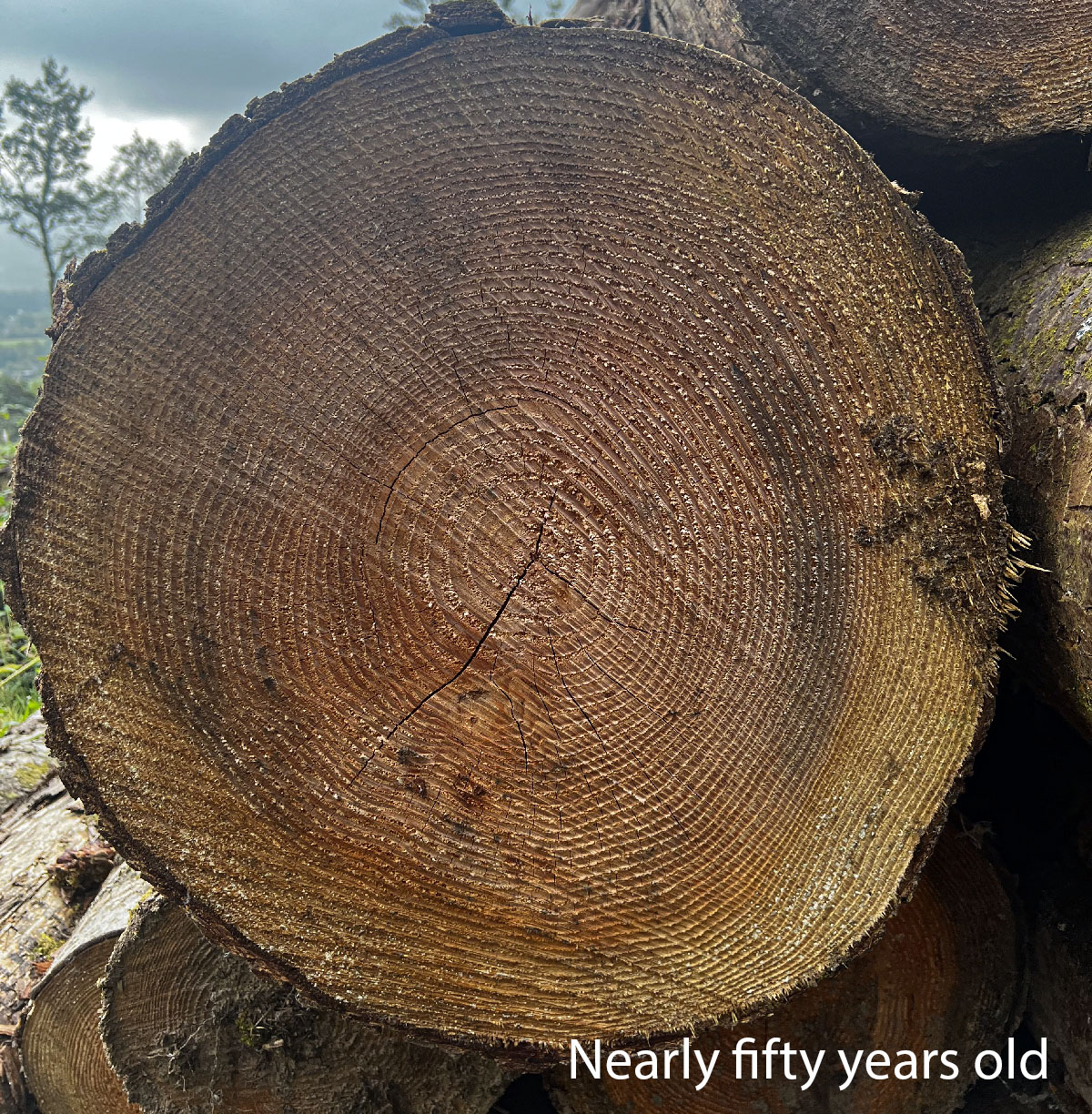
Loggers are not allowed to cut native species of tree, so these must be left untouched. However, one of the consequences of removing their coniferous cousins is that the remaining natives are denied the shelter they had enjoyed. Many of them topple in the wind, having grown taller to reach the light in a mature woodland. Left standing in open ground, their roots can no longer keep them upright. A number of mature oaks have met this fate around Moore’s Ladder. One of them fell across the trail and it is now impassible on foot. People have found a way around it, but that part is no longer Moore’s Ladder. It is a new bit of trail.
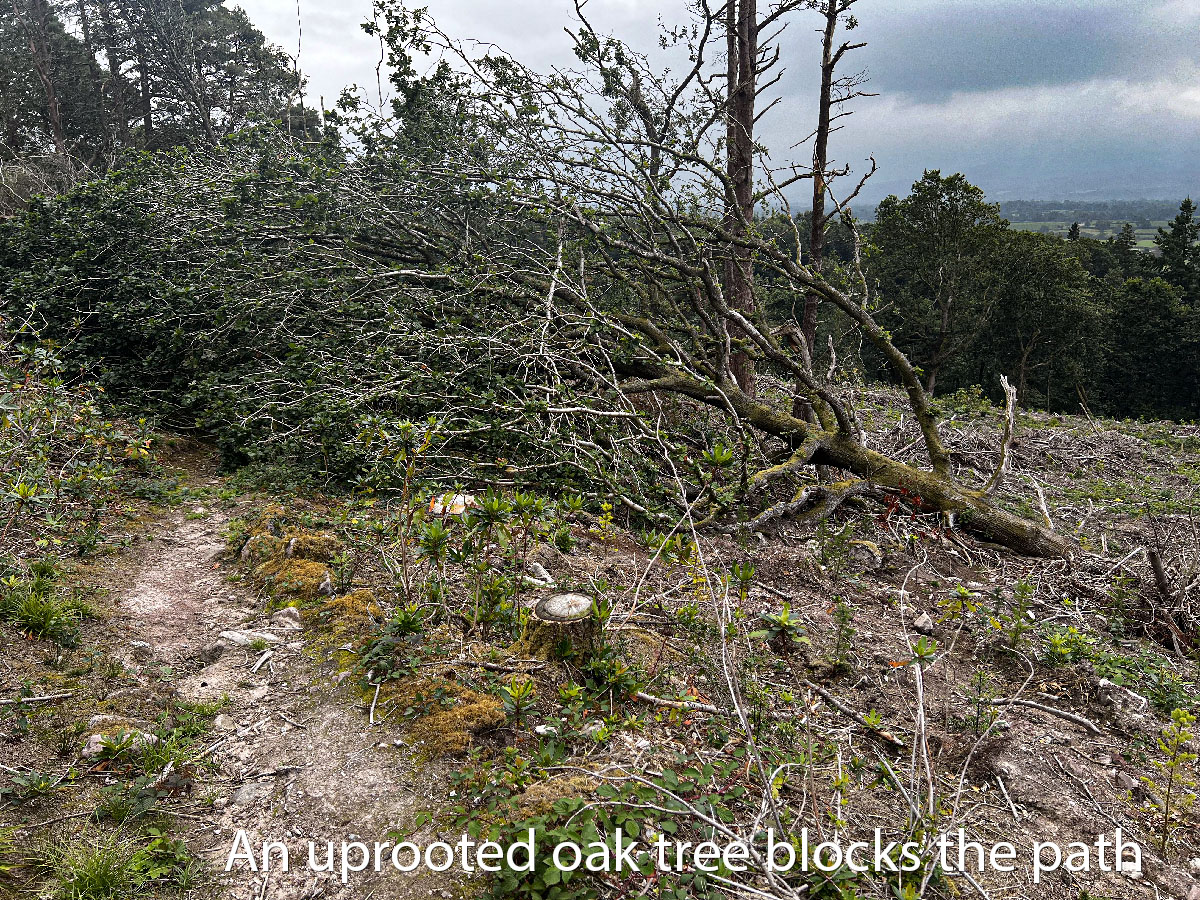
Coilte have been informed of the blocking of the trail.
The upper entrance to the trail was in between tall, mature trees and it was like walking from daylight into dusk when you started down the Ladder. Now it is a bleak vista that lays before you. At least someone had the decent instinct to mark the entry to the trail.
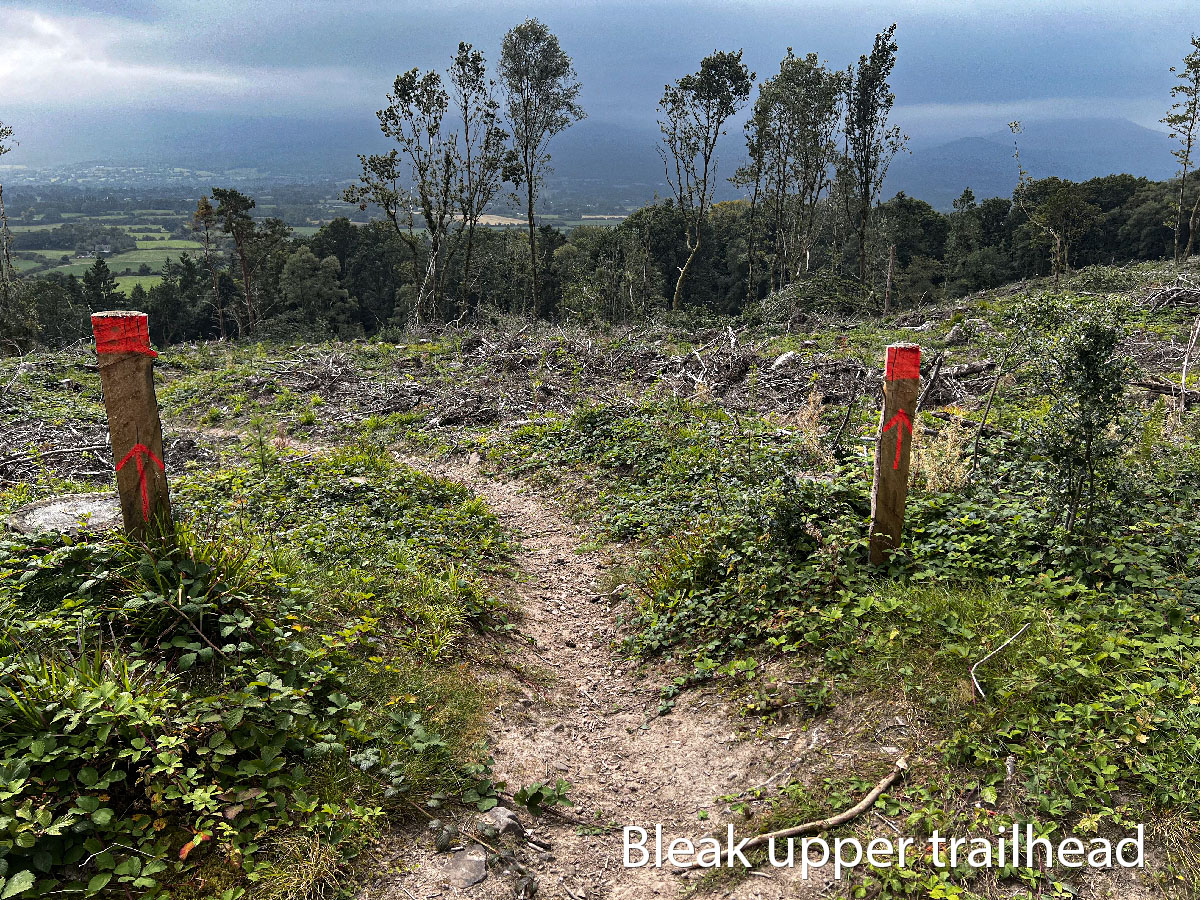
In this photo you may have noticed the scattered native oaks, now exposed to every storm that will pass this way, unlikely to remain standing for very long. Also, it is unfortunate that only sitka spruce have been planted. No indigenous species of tree have been planted.
Another unintended consequence of the now open ground will happen soon, probably starting next Spring. Unfortunately, the invasive and voracious rhododendron plant is prolific in the area around Moore’s Ladder. Many hikers would have cut and broken its branches every year, just to keep the trail open.
One of the plant’s worst tendencies is to follow the light and to block out light for smaller plants. This leaves a dark, mostly barren terrain under the rhododendron. The rhododendron has now been handed a chance to totally dominate the landscape around Moore’s Ladder. There is no money in rhododendron, so Coilte are unlikely to cut it.
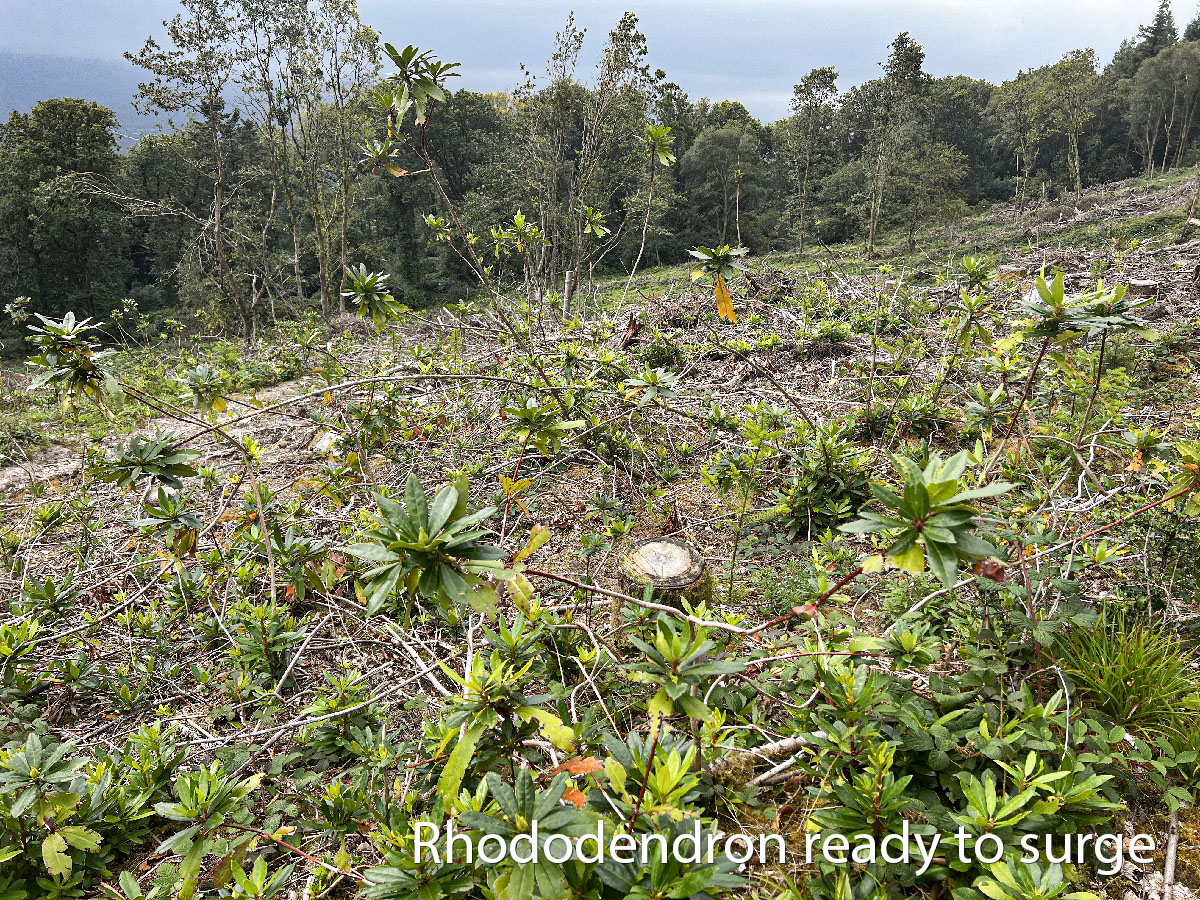
The purpose of this article is not to criticise logging per se. It is a commercial necessity and there are important jobs involved. The key point is this: is there a way of managing woodlands that strikes a balance between commercial reality and more nature-focussed interests? Could a zero-logging corridor be preserved around key amenity trails like Moore’s Ladder?
The fear is this: if Moore’s Ladder is not as attractive to walkers, it may get used less. It is walkers who have kept it open for decades. In the absence of enough people, will the voracious rhododendron smother Moore’s Ladder? A balance has been upset, a balance that had kept Moore’s Ladder open for people to enjoy. The purpose of this article was to inform people of what has happened and, hopefully, to provoke debate about how our woodland amenities are managed. It is also hoped that more people will walk Moore’s Ladder and help to keep it open.
Note: for those wanting to walk along Moore’s Ladder, the best way is to park in Bansha Woods Car Park at Kilshane. Take the trail to the left (East) as you enter the carpark. When you get to a fork in the track, take the right hand trail. When you reach a fallen tree and a gate, on your right hand side you will see the beginning of Moore’s Ladder. If you turn to the left when you get to the top of the Ladder, you will end up on the Metallic Road that runs from Cordangan to the Glen of Aherlow. If you turn to the right at the top, you can follow a loop back to the car park (always taking the right hand option at intersections) and you may spot the entrance to Moore’s Table on your right hand side. The views from Moore’s Table are well worth a visit.
Moore’s Ladder is a fairly steep walk and the ground is tricky in parts. Not every walker will find it appropriate for them.


